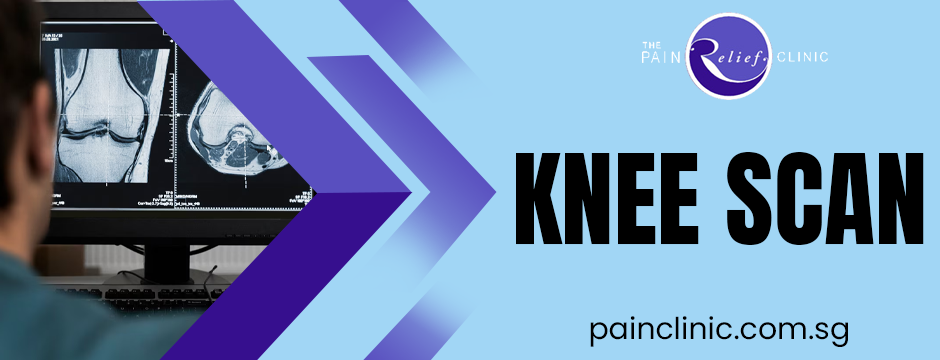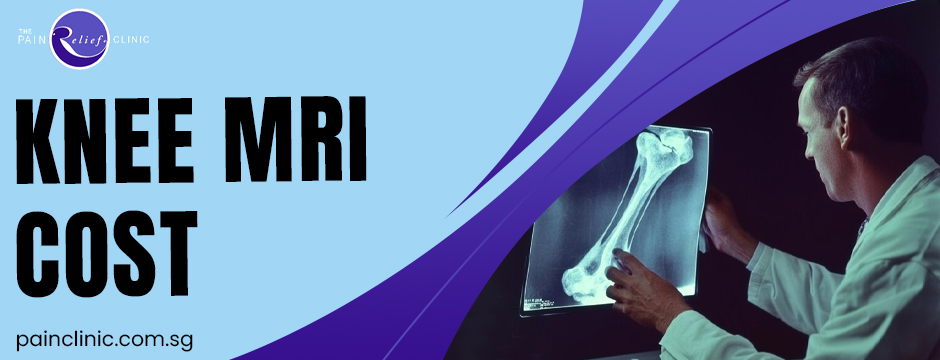Why MRI Scan is the Gold Standard for Diagnosing Knee Pain
Knee pain is more than just a passing discomfort. For many people—young athletes, active adults, and older individuals alike—it can become a significant limitation in daily life. Whether it stems from an injury, arthritis, or an unknown underlying issue, knee pain shouldn’t be ignored. While rest, over-the-counter medications, and physical therapy can often provide temporary relief, persistent or severe pain deserves a deeper look. That’s where an MRI knee scan becomes invaluable. Unlike standard imaging techniques, MRI (Magnetic Resonance Imaging) gives a comprehensive and detailed view of the knee’s internal structure. In fact, it is often considered the gold standard for diagnosing knee pain.
Why Knee Pain Shouldn’t Be Ignored
Knees play a vital role in mobility, balance, and overall function. Any damage or wear to this joint can cause significant pain and limit activity. For young people, knee injuries often result from high-impact sports or improper training. For older adults, conditions like osteoarthritis can slowly wear down the joints over time. And sometimes, unexplained knee pain may point to more serious health issues like a stress fracture or bone tumour.
Ignoring persistent symptoms can delay necessary treatment, resulting in worsened conditions or longer recovery periods. Getting a timely knee scan can make all the difference.
What Makes MRI So Special?
MRI technology has completely changed how doctors diagnose musculoskeletal issues. Unlike X-rays or ultrasounds, MRI can capture high-resolution images of both hard and soft tissues. This includes muscles, ligaments, cartilage, bone marrow, and tendons—all crucial components of a healthy knee.
The unique feature of MRI is its early problem detection. Micro-tears in ligaments, subtle cartilage degeneration, and bone bruises are often missed in other scans. But with MRI, even these small changes are visible, allowing doctors to act before the condition worsens.
A knee scan via MRI is non-invasive, does not involve radiation, and provides clarity that few other imaging techniques can match.
Understanding the Knee and MRI’s Role
The knee is a complex hinge joint made up of several moving parts—bones, cartilage, ligaments, tendons, and fluid-filled sacs. Because of this complexity, identifying the source of pain can be tricky with a physical exam alone. MRI steps in as a powerful tool that allows physicians to examine every component of the knee in detail.
When you undergo a knee scan, the MRI captures layered images of the joint from multiple angles. These images reveal:
- Ligament tears (like ACL or MCL injuries)
- Meniscus damage
- Early signs of arthritis
- Inflammation or fluid buildup
- Cartilage deterioration
- Bone fractures or tumours
By pinpointing the exact issue, an MRI allows your doctor to customise the most effective treatment for your specific problem.
When Should You Get an MRI Knee Scan?
While not every instance of knee discomfort requires imaging, certain red flags warrant a knee scan:
- Pain that doesn’t improve with rest or medication
- Swelling that persists or worsens
- A popping sound or instability when walking
- Unable to bend or fully extend the knee
- History of joint stress or damage
In these cases, a thorough physical evaluation followed by an MRI can help determine whether you’re dealing with a minor sprain or something more serious.
How an MRI Helps with Early Diagnosis
One of the most powerful aspects of an MRI knee scan is its ability to detect issues before they become critical. Many knee problems, like small tears in cartilage or the early onset of arthritis, develop gradually. By identifying these early changes, your doctor can recommend preventative treatments that may help you avoid surgery altogether.
For example, a runner with early cartilage wear might benefit from strengthening exercises and physiotherapy. A patient with minor meniscal damage could respond well to non-invasive treatment if diagnosed early. Without the detailed insight from MRI, these problems might only come to light when they’ve progressed too far.
Guiding Treatment Plans More Effectively
Another major advantage of MRI is its role in planning appropriate treatment. A knee scan can show the exact location and severity of the damage, helping doctors decide whether conservative therapy will work or if surgery is needed.
If surgery becomes necessary, an MRI provides a detailed map of the joint. This is especially useful for procedures like:
- ACL reconstruction
- Meniscus repair
- Cartilage resurfacing
- Total knee replacement
Having a clear view of the problem area ensures the procedure is as minimally invasive and effective as possible.
Post-Treatment Monitoring and Recovery
MRI isn’t just for diagnosing—it’s also useful after treatment. Doctors often use MRI scans to monitor healing after surgery, check for post-operative complications, and ensure recovery is on track. For example, after an ACL reconstruction, a knee scan can confirm that the ligament graft is healing properly and that there’s no new damage to surrounding tissues.
Being able to see inside the joint without surgery makes MRI an essential tool for follow-ups, giving peace of mind to both doctors and patients.
Benefits of Timely Access to MRI
In places where MRI services are readily available, patients often enjoy quicker diagnosis and faster recovery. Delays in imaging can lead to delayed treatment, increased pain, and even further injury. That’s why clinics offering fast access to MRI for knee pain are making such a difference in patient outcomes.
Whether you’re an athlete looking to get back on your feet or an elderly patient trying to maintain mobility, early intervention made possible by a timely knee scan can have long-lasting benefits.
What to Expect During a Knee MRI
If you’re preparing for your first knee scan, here’s what you can expect:
- Preparation: You’ll likely be asked to remove any metal items, including jewellery or watches. Comfortable clothing is usually provided.
- Positioning: You’ll lie down on a table with your knee placed in a special holder to keep it still.
- Scanning: The table slides into the MRI machine. You’ll hear a series of tapping or knocking sounds as the machine captures images. The entire process takes about 20–45 minutes.
- After the Scan: You can resume normal activities unless told otherwise. A radiologist will interpret your scan, and your doctor will go over the results with you.
It’s a painless procedure and is entirely non-invasive.
Final Thoughts
Knee pain can interfere with everything—from walking and exercising to simply getting through your daily routine. While some aches can be managed with rest, persistent discomfort deserves a closer look. A knee scan via MRI offers clarity, accuracy, and insight that other imaging methods simply cannot match.
At The Pain Relief Clinic, we specialise in providing timely and accurate diagnoses for knee pain through advanced MRI knee scans. Whether caused by sports injuries or age-related conditions, persistent knee pain requires proper evaluation. Our clinic offers faster access to MRI imaging, helping detect serious issues like arthritis, stress fractures, or bone cancer. With our expert care, patients receive effective, personalised treatment plans that support quicker recovery and long-term joint health.
By identifying the exact source of pain, MRI empowers your healthcare team to deliver more precise, timely, and effective treatment. Whether you’re recovering from an injury, managing a chronic condition, or just trying to understand what’s going on with your knee, an MRI is a powerful ally on your journey to recovery. If you or someone you know has been dealing with ongoing knee discomfort, don’t wait. Just visit The Pain Relief Clinic and learn about the knee MRI cost today!
FAQs
1. When should I consider getting a knee scan for my knee pain?
If your knee pain persists despite rest, painkillers, or supplements like glucosamine, it’s time to get a knee scan. A knee MRI is especially important if you’ve experienced trauma or your pain is worsening, as it helps detect serious underlying conditions early.
2. What makes an MRI the best option for diagnosing knee problems?
An MRI is considered the gold standard for knee scans because it provides detailed images of soft tissues, bones, ligaments, and cartilage. It allows doctors to accurately diagnose issues like arthritis, meniscus tears, or stress fractures, ensuring more targeted treatment.
3. Is the knee MRI scan safe? Does it involve radiation?
Yes, a knee MRI is completely safe and does not use radiation. Unlike X-rays or CT scans, MRI uses magnetic fields and radio waves, making it a preferred imaging choice, especially for persistent or severe knee conditions.






